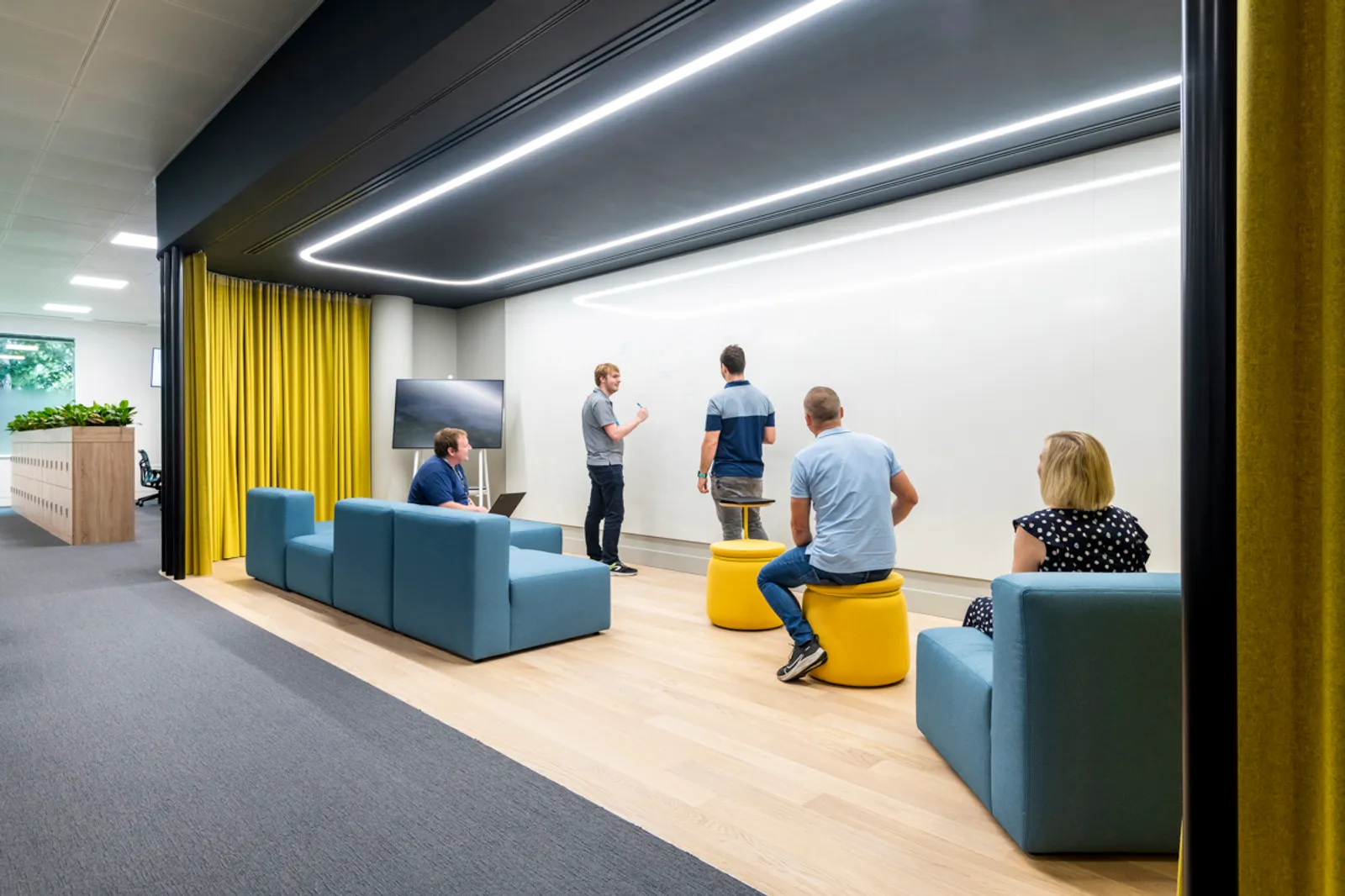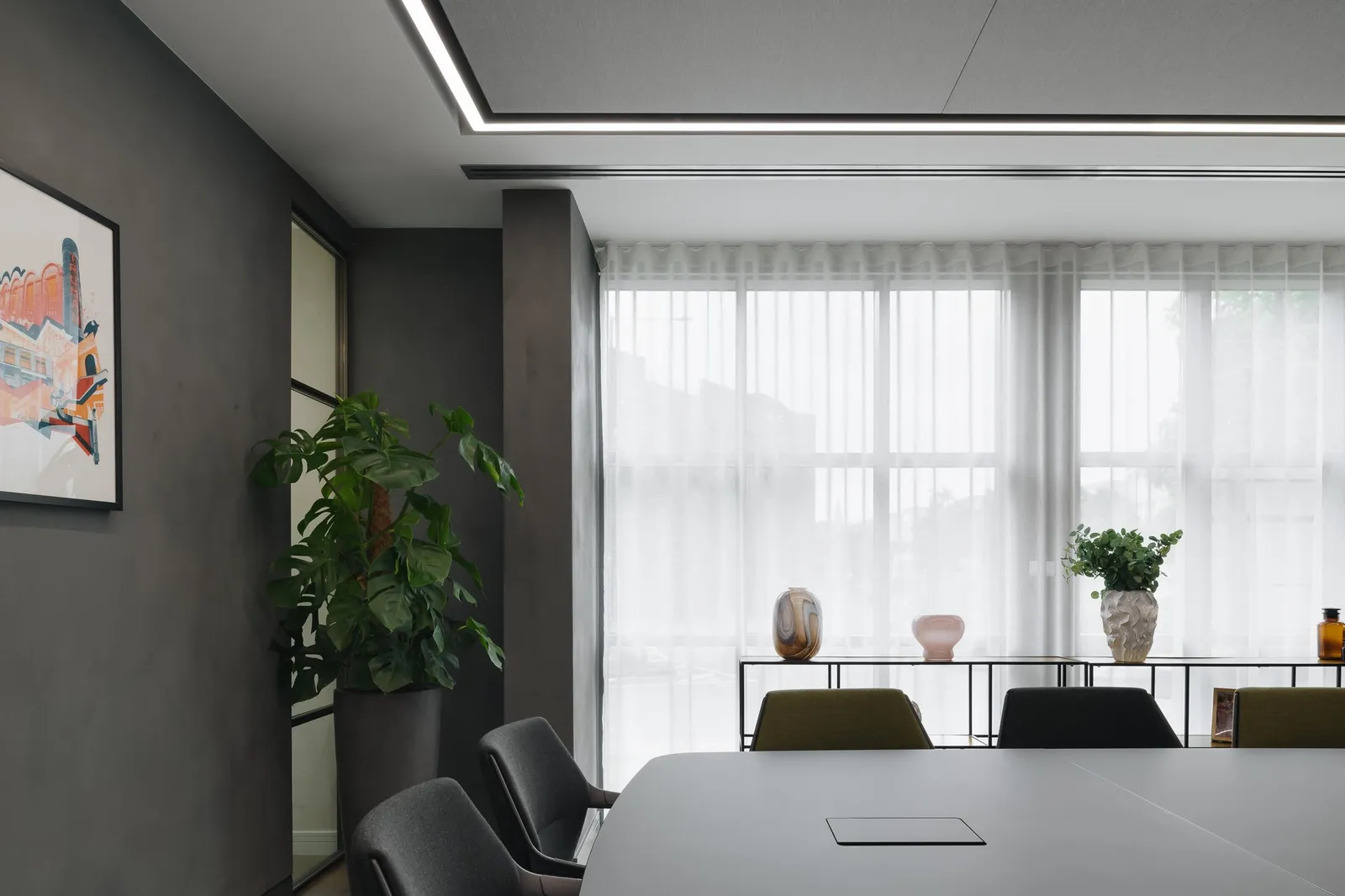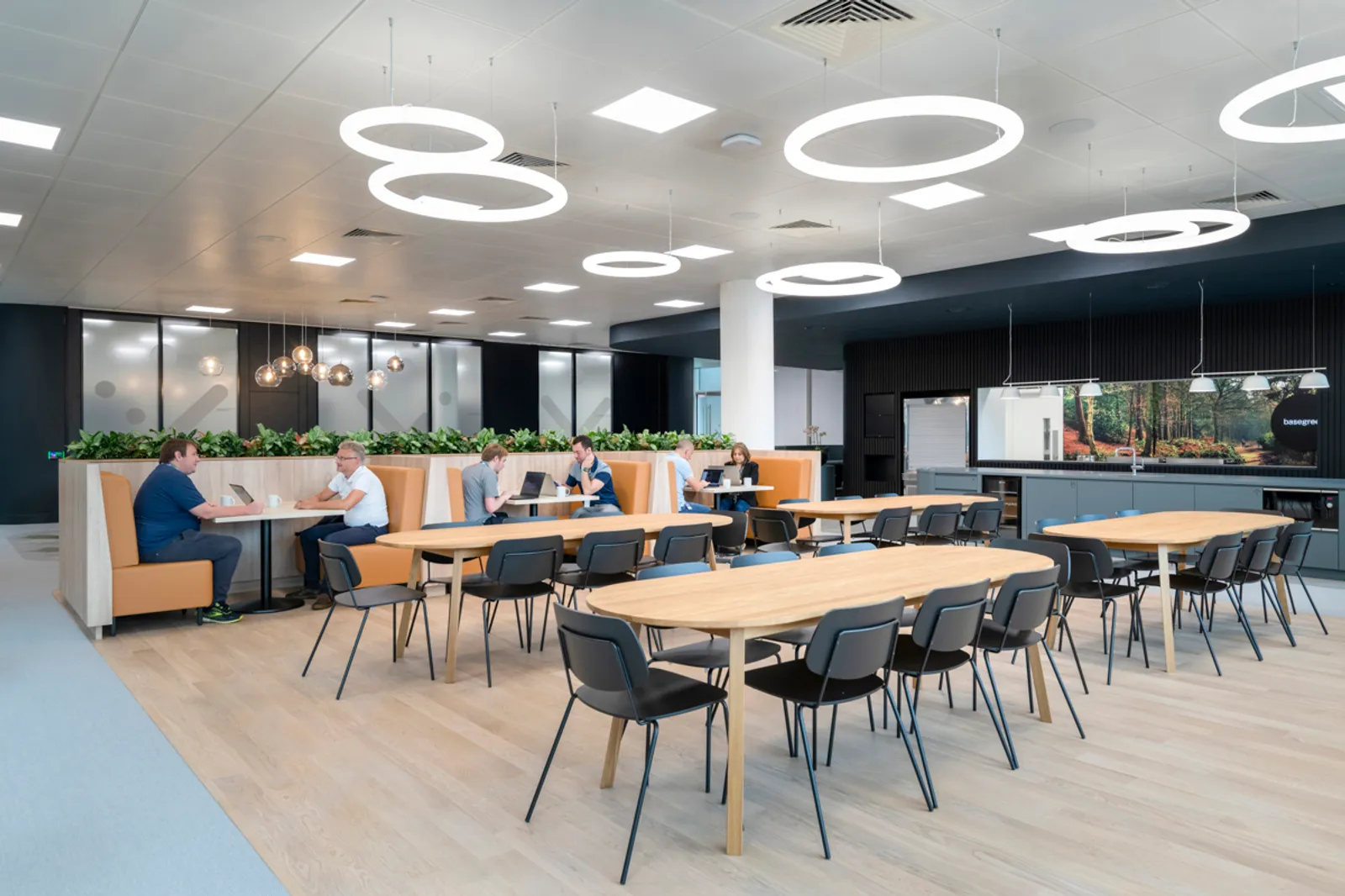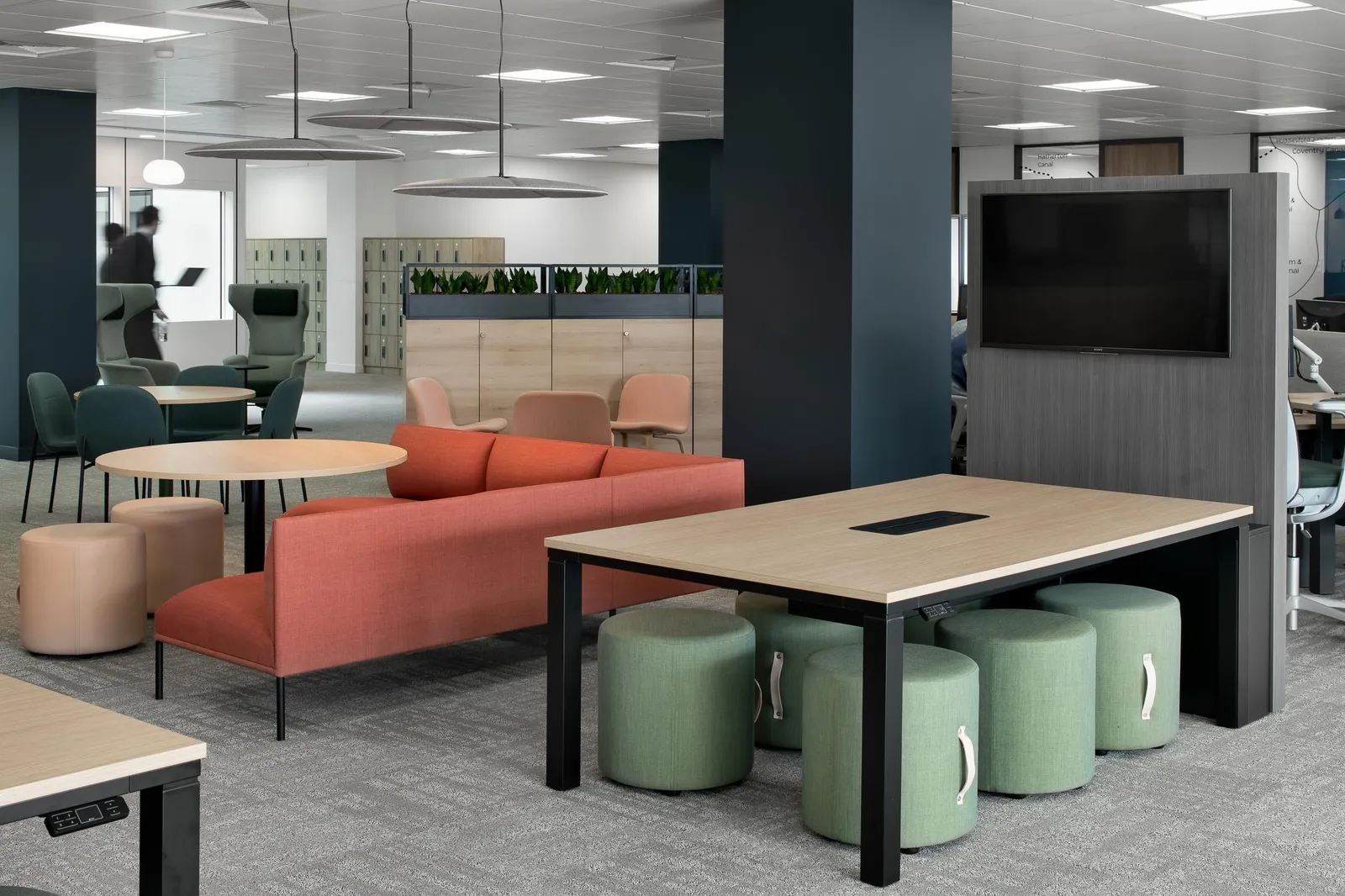Circular economy in office design and fit out
Circular economy in office design and fit out: everything you need to know
There’s a limit to how much we can take from the Earth and safely replenish.
Judging by the latest figures from Circular Online, we’re fast approaching it too. Findings from its Circularity Gap Report 2022 show the global economy is consuming 70% more virgin materials than the world can safely replenish. Unfortunately, we need only look toward our annual resource usage to see that things are trending in the wrong direction.
Globally, we’ve used:
- 89.8 billion tonnes in 2016
- 110 billion tonnes in 2019
- an estimated 101.4 billion tonnes in 2021
Even more worrying is the fact that more than 90% of what we take from the planet actually goes to waste (just 8.6% of materials are reused).
We have a shared responsibility to tackle our overreliance on Earth's finite resources. However, it’s extra important that the construction industry does its bit to combat the crisis. This is especially true when you consider that roughly half of the raw materials we extract go into the world's built environment. But that’s only taking into account the materials we use; construction also creates an estimated third of the world's overall waste and at least 40% of the world's carbon dioxide emissions.
But there is one way that we can start to change our trajectory and move closer to a more resource-considered world - as well as taking a big step towards net-zero carbon. And that’s with the circular economy.

What is the circular economy?
Essentially, the circular economy is a systems solution framework that’s designed to tackle climate change, biodiversity loss, waste and pollution.
It’s a step change from the linear nature of the majority of our current economy; to extract raw materials from the Earth, turn them into products and throw them away as waste.
Interested in learning more? Watch our FREE webinar about the circular economy now!
What’s the difference between circular economy and recycling?
Recycling is the process of converting waste into reusable material. It’s a fact that recycling can be a vital part of the circular economy - but it should be a final consideration as opposed to the first option. That’s because recycling begins at the end; essentially, at the throwaway stage of a product's lifecycle. The difference with a circular economy is that it goes right back to the beginning in order to stop waste from being created in the first place.
Want to learn more about the circular economy? Download our FREE guide

Does circular economy make sense for office design?
It doesn’t just make sense, it’s perfect for it.
The Ellen MacArthur Foundation, a charitable thought leader in the circular economy, suggests this framework is based on three principles. They’re all driven by design and supported by a transition into renewable energy and materials. The three principles are:
- Eliminate waste and pollution - waste is not inevitable; it’s the result of design choices. Many products could actually be circulated by being maintained, shared, reused, repaired, refurbished, remanufactured and, as a last resort, recycled.
- Circulate products and materials (at their highest value) - we must keep materials in use as products or, when they’re no longer useful, as components/raw materials. However, it’s essential they’ve been designed with their eventual circulation in mind.
- Regenerate nature - finally, by moving from a take-make-waste linear economy to a circular economy, we can support natural processes and leave more room for nature to thrive.
Of course, finding solutions that reinforce these principles will take creativity and innovation. But as designers and constructors, we are well versed to do so. From office design to fit-out, here’s how to apply the principles of circular economy to every stage of the built environment.
How to apply circular economy principles to the built environment
It’s no secret that construction is resource and energy-intensive with fit-outs being responsible for about a third of emissions over a building’s lifetime. This is because although a typical building lasts around 60 years, offices are generally refitted every eight years or so. Consequently, vast amounts of embodied energy go into producing, transporting and installing new furnishings, carpets, lighting, etc.
With that in mind, we need to consider the lifecycle of these products and materials from the offset. The GLA (Greater London Authority) has come up with some guidance to help you apply circular principles in the real world:
- Conserve and source resources responsibly - always look to reduce the quantities of hidden materials that are often hidden in the built environment. If you need to source materials and resources, do so responsibly and sustainably.
- Design to eliminate waste - this is about tackling waste reduction at the source. So design for longevity, flexibility and reusability. This will minimise the amount of waste that would arise from construction, demolition and excavation.
- Manage remaining waste sustainably - carefully consider how you propose to manage any waste that does arise, e.g. demolition, excavation, construction, municipal and industrial waste (if applicable).

All three of these principles must be considered throughout every stage of the process - from specification, procurement and design right through to construction and day-to-day operation. With that in mind, collaboration with like-minded suppliers and partners is crucial.
Area recently partnered with Waste to Wonder on a large-scale refurbishment project. Working with the ethical office clearance company meant that 300 desks, office chairs, storage units, filing cabinets, coffee tables and other non-confidential or data-holding devices were reused by the charity. Consequently, 14,000 kg of embodied carbon was saved and an estimated £17,500 market value was also retained.
When working with the organisation, 80 – 100% of items are typically redistributed to projects across the world, with the remainder of damaged/unusable materials being sent for ethical recycling. Crucially, none of these items will be sent to a landfill.
For Duncan Morris, our Head of Sustainability, it’s vital that this sector does its bit to stop unnecessary waste in the first place.
“The construction industry is the largest consumer of natural resources in the world by some distance. Carbon associated with the built environment, embodied within materials and generated through construction and ongoing building operation, accounts for somewhere in the region of 40% of total global CO2 emissions. And from a waste perspective, we’ve been an incredibly wasteful industry historically in terms of the amount of waste we generate, how ‘waste’ is defined and what we choose to do with it. While dramatic improvements have been made, it’s clear we have some way to go,” he says.
But along with Waste to Wonder, there are plenty of options out there to help. These include:
- Design - Reduction of waste can be achieved via design through the reuse of existing assets and sustainable specification.
- Supplier take-back schemes - it’s becoming more and more common for suppliers to provide options to remove suitable materials. These can either be reused or entered back into the supply chain.
- Segregated collection - designated waste collection streams, e.g. for plasterboard, both increases the value and reuse potential of the offtake and also reduces the environmental impact.
- Globechain - this is a valuable reuse marketplace that redistributes unneeded items. It does so by connecting corporates from the construction, retail, hospitality and office sectors with charities, small businesses and people in need.
“With so many schemes and organisations available, there’s no one-size-fits-all solution when it comes to waste. And all projects are going to vary in terms of scope, scale, location and implementation - so find one that's right for you. At the end of the day, a well-thought-out waste strategy doesn’t just have huge environmental benefits, it can create crucial cost savings too,” says Duncan.

Designing workplace solutions for the circular economy
At Area, we can help you develop a workplace solution with the circular economy in mind. To do so, we combine its ethos - essentially, thinking about a building’s lifecycle in individual layers - with our own tried-and-tested design principles:
- Vision: sustainable and ethical design
- Space: designing for flexibility and adaptability
- Services: designing for performance
- Skin: designing for ease of refurbishment
- Structure: designing for deconstruction
1. Vision: sustainable and ethical design
Careful pre-planning to ensure you start on a more sustainable footing.
Conduct a pre-refurbishment audit
First things first, it’s a good idea to conduct a pre-refurbishment audit before starting your office design. This lets you know exactly what’s available in the current space and, crucially, what can be used in the new one. But don’t worry if you can’t use everything; materials that aren't suitable can always be donated and sold elsewhere.
Opt for refurbished or recycled materials
When you do need to source materials, consider reused, reclaimed or refurbished products instead of new ones. Ethical designers should be able to specify the use of these materials - or ones that contain high levels of recycled content. But whatever the vision for your design is, ensure sustainability is at the forefront.
Sign-up for take-back schemes
Today, many manufacturers are now offering direct recycling take-back schemes. This is where offcut and stripped-out materials are recycled into new products. The good thing is that this ensures the material retains its value in the new product - one of the critical components of a circular economy.
2. Space: designing for flexibility and adaptability
Next, consider every scenario that could affect the use of your space.
Design for tomorrow (not today)
We’ve talked before about how office design has evolved with occupant needs - it had to. So when you’re planning a space, consider all of the different scenarios that could change its usage - then design accordingly. The climate will continue to be a concern going forward, so we must use materials that work for tomorrow - not just today.
Put flexibility first
This can't be an afterthought anymore. Modern office spaces must be adaptable for future needs and flexible in use. Doing so doesn’t just mean the space is likely to be futureproofed, it ensures there will likely be fewer wasted materials if you do need to make adjustments.

3. Services: designing for performance
Time to close the performance gap between the design and performance of your building.
Measure unregulated energy usage
While we normally measure regulated energy using tools such as an EPC, the unregulated energy usage of a building is often disregarded. But this can't be overlooked because, in some building types, unregulated energy can account for around 50% of total energy use. Close this performance gap by:
- considering operational energy demands (regulated and unregulated energy)
- ensuring rigorous commissioning of building services
- providing all the training and handover documentation necessary to manage the building's systems once it's operational
4. Skin: designing for ease of refurbishment
Design in layers so that spaces can be reconfigured, instead of being ripped out and refitted.
Reuse existing materials to reduce quantities
This is one of the best options for both reducing the carbon footprint of an office fit-out and embracing the circular economy. By retaining materials for their initial use, you’ll minimise the quantity needed to be sourced or manufactured.
Think of products part-by-part
Both products and services should be designed to be assembled, deconstructed and reused (or recycled) on a part-by-part basis. Doing so will future-proof the building and make it flexible for future tenants’ needs. Importantly, that’ll increase their length of occupancy too.
5. Structure: designing for deconstruction
Think as much about end-of-life and deconstruction as installation and day-to-day usage.
Design with deconstruction in mind
If spaces are designed with easy deconstruction in mind, you can maximise the reusability of materials at the end of their lifetime.
Engage with installers early on
Having put things together, it makes sense that installers would have the most knowledge on how to deconstruct spaces and products. With that in mind, it’s important this information is shared as soon as possible.
Plan well in advance
Deconstruction should be carefully planned ahead of time. This allows different elements such as ceilings, flooring and partitions to be carefully removed and, hopefully, reused in future.
Want to apply the circular approach to your business? Download our guide to learn more.